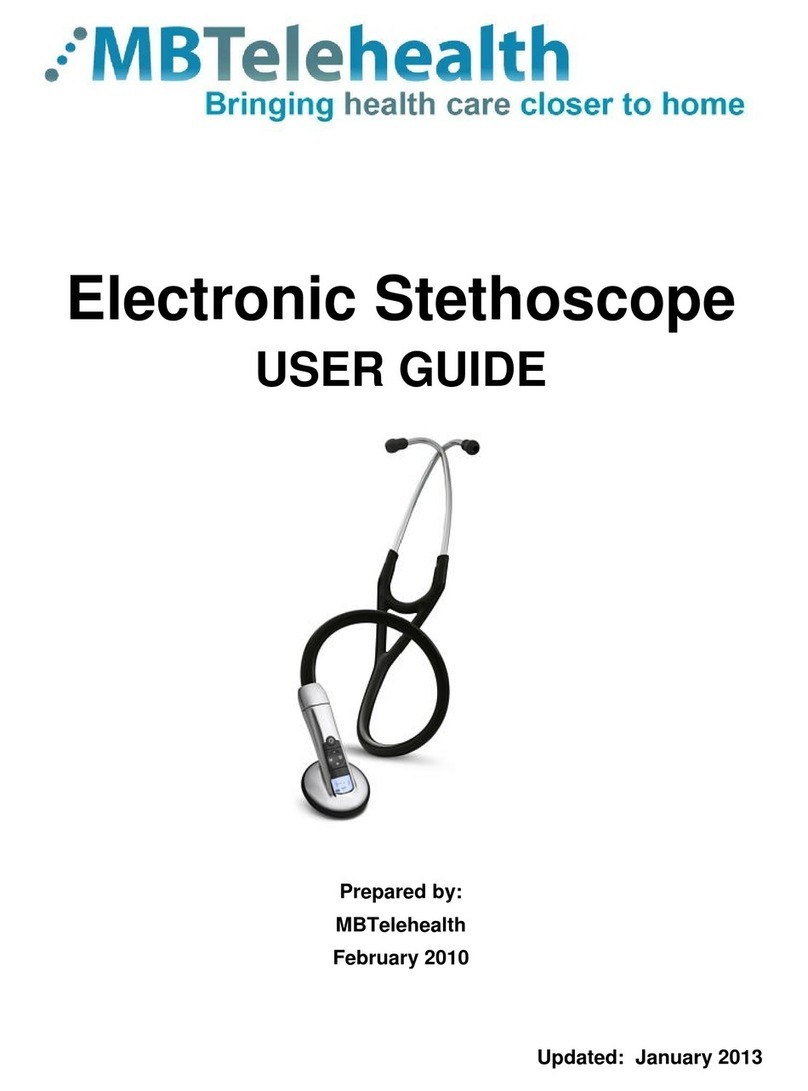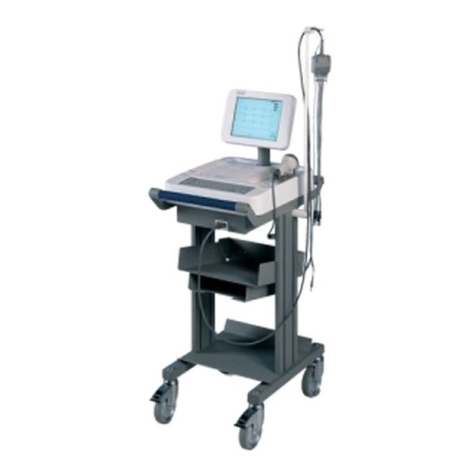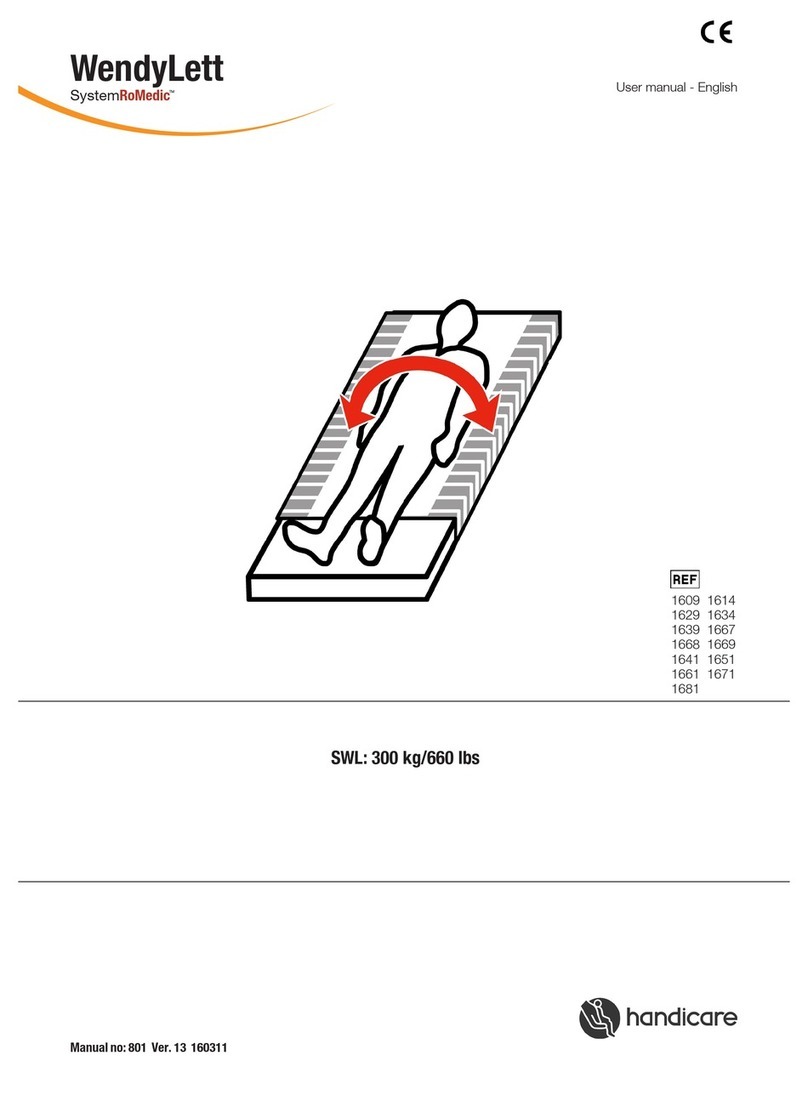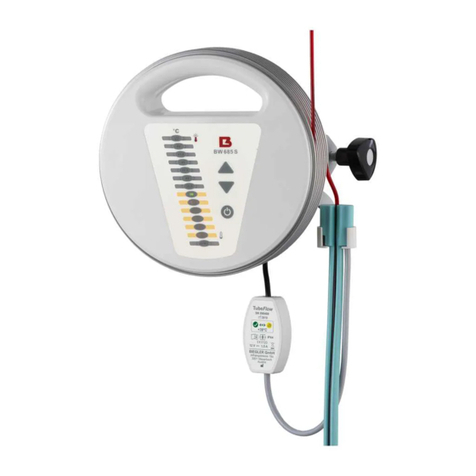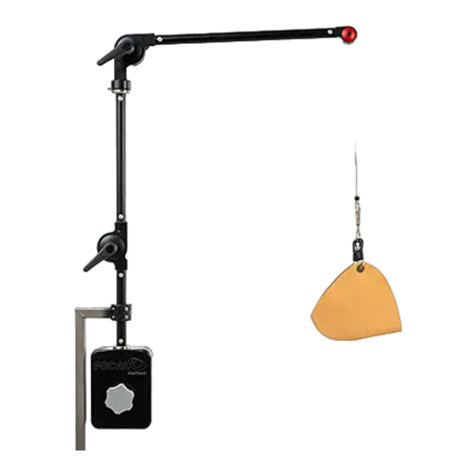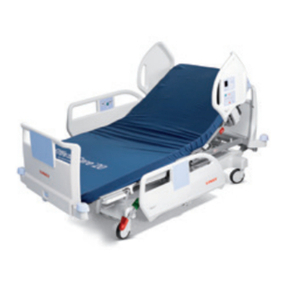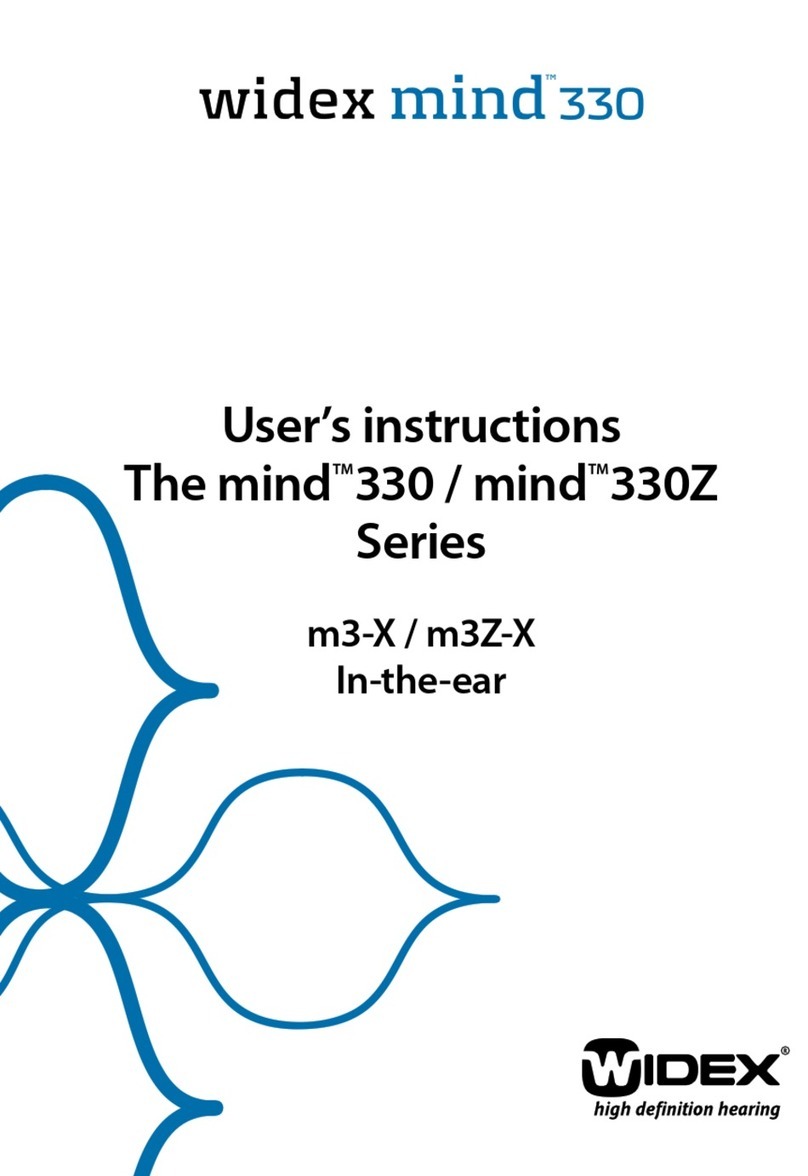medic spa FS10A User manual

User Manual
Pulse Oximeter MATRIX O220
M. Feingersh & Co.Ltd
29 Habanay St., Holon. Tel: 03-5581666

INSTRUCTIONST O USER
Dear users, thank you very much for purchasing the Pulse Oximeter.
This manual describes, in accordance with the pulse oximeter s features and requirements, main
structure, functions, specications, correct methods of transportation, installation, usage, repair,
operation,maintenance and storage, etc. As well as the safety procedures to protect both the user
and equipment. Please refer to the respective chapters for details.
Please read the User Manual carefully before using this product. The User Manual which describes
the operating procedures should be followed strictly Failure to follow the User Manual may cause
measuring abnormality, equipment damage and human injury. The manufacturer is NOT responsible
for the safety, reliability and performance issues and any monitoring abnormality, human injury and
equipment damage due to user's negligence of operation.
1 SAFETY
1.1 Warnings
A. DO NOT use the oximeter while the patient is being scanned by MRI
B . It is recommended that the oximeter should be inspected before use, when there is obvious
damage, stop using the device.
C. Discomfor t or pain may appear if using the device ceaselessly. Especially for microcirculation
barrier patients, it recommended that The oximeter should not be used on the same nger more than
30 minutes.
D. For some patients, need a more careful examination of the measurement site, the oximeter shall
not be placed in edema or fragile organization
E. The device is not used for neonate and infant.
F. The device is just one of clinical auxiliar y equipment, other means of clinical diagnosis and clinical
response factor s determine the patients condition must be consolidated under the guidance of a
doctor.
G. It is not recommended to use the oximeter in high frequency environment such as electrosurgical
equipment.
H. Prevent children from swallowing the oximeter or its accessories children must be accompanied
by adult guardian using products.
I. A exible circuit connects the two par ts of the oximeter,DO NOT twist or pull on the connection.
G. Please follow local ordinances and recycling instructions regarding disposal or recycling of the
device and batteries.
1.2 CAUTIONS
A The equipment is designed to measure the percentage of arterial oxygen saturation of functional
hemoglobin. Factors that may degrade pulse oximeter performance or aect the accuracy of the
measurement include the following:
Do not apply the pulse oximeter on the same arm as a blood pressure cu, arterial catheter or infusion line)s()IVs(.
Excessive light, such as sunlight or direct home lighting.
Moisture in the equipment.
Finger is outside recommended size range.
Poor pulse quality.
Venous pulsations.
Anemia or low hemoglobin concentrations.
Cardio green and other intravascular dyes.
Carboxyhemoglobin.
Methemoglobin.

Dysfunctional hemoglobin.
Articial nails or ngernail polish.
B. Please read the measure value when the waveform on screen is equably and steady-going, the measure
value is optimal value, and the waveform at the moment is the standard one.
C. The light )the infrared is invisible( emitted from the equipment is harmful to the eyes, so the user and the
maintenance man should not look at the light source.
2 THE BASICS
The pulse oxygen saturation is the percentage of HbO2 in the total Hb in the blood, so-called the O2 con-
centration in the blood. It is an important bio-parameter for respiration. A number of diseases relating to
respirator y system may cause the decrease of SpO2 in the blood, furthermore, some other causes such
as the malfunction of human body's self-adjustment, damages during surgery, and the injuries caused
by some medical checkup would also lead to the diculty of oxygen supply in human body. And the cor-
responding symptoms would appear as a consequence, such as vertigo, impotence, vomit etc. serious
symptoms might bring danger to human's life. Therefore, prompt information of patients SpO2 is of greats
help for the doctor to discover the potential danger, and is of great importance in the clinical of medical eld.
2.1 Principle
Principle of the oximeter is as follows An experience formula of data process is established taking use of
Lambert Beer Law according to Spectrum Absorption Characteristic of Reductive hemoglobin Hb and
oxyhemoglobin HbO2 in glow & near-infrared zones. Operation Principle of the device is Photoelectric
Oxyhemoglobin Inspection Technology is adopted in accordance with Capacity Pulse Scanning Recording
Technology, So that two beams of dierent wavelength of lights can be focused onto human nail tip through
perspective clamp nger-type sensor. Then measured signal can be obtained by a photosensitive element
information acquired through which will be shown on screen through treatment in electronic circuits and
microprocessor.
2.2 INTRODUCTION
2.2.1 Intended Use
The Pulse Oximeter is intended to measure functional arterial oxygen saturation )SpO2( and pulse rate of
adult and children patients.
WARNING:
This pulse oximeter is intended for use only by clinical professionals or under their guidance. It must only
be used by persons who have received adequate training in its use. Anyone unauthorized or untrained
must not perform any operation on it.
CAUTIONS:
This pulse oximeter is intended for use in hospital clinical institution healthcare community.
The pulse oximeter is NOT design for newborn and infant. For adults and children, it recommended
that the finger thickness should between 8-25.4mm.
2.2.2 Components
The oximeter consists of probe, electronic circuits, and display and plastic enclosures.

NOTES
The probe is the hole in the middle of the equipment to which the nger insert.
The probe is the Applied Part of the equipment.
2.2.3 Features
The pulse oximeter is small in volumes, light in weight and easy to carry.
Low in power consumption, 600 spot-checks on two AAA batteries.
One button and easy to operate.
Auto turn o within 8 seconds when there is no signal.
2.3 Front View
2 .4 Functions
2 .5 Symbols

3 BATTERY INSTALLATION
A. Put the two AAA batteries into batter y compartment in correct polarities.
B. Push the batter y cover horizontally along the arrow shown as right.
WARNINGS:
Batter y polarities should be correctly installed, otherwise, damage may be caused to the equipment.
Please remove the batteries if the equipment will not use for a long time.
4 OPERATING GUIDE
4.1 Application Method
A. Open the batter y cover, and put the two AAA batteries into the batter y compartment in correct polari-
ties, then replace the cover ;
B. Gently press the bottom of the equipment and open the probe, then insert one nger into the probe;
C. Press the button to turn the equipment on, and the measure interface will appear 3 seconds later ;
D. After about 10 seconds, the measurement result can be read directly from the display screen;
E. Before reading the parameters, make sure that stable waveform of the pulse oximeter interface has
sustained more than 4 second;
F. * After turning the equipment on, the pulse sound is open. Long press the button for 2 seconds can close
the pulse sound. Long press the button can open the pulse sound again;
G. * In the normal measure state, short press) less than 2 seconds( the button can switch the display direc-
tion of the screen;
H. The equipment can be turned o automatically within 8 seconds when the finger left the probe.
Notes:
The pulse sound are optional function.
Only FS20A can switch the display directions.
4.2 Attention for Operation
A. Before use check and conrm that the people or nger size were applicable;
B. Before use check and conrm that the environment should be non-combustible material, as well as to
avoid high or low temperature and humidity, but also need to pay attention to the following:
a( To avoid glare and direct sunlight exposure;
b( To avoid radiation infrared or ultraviolet radiation;
c( Avoid contact with the organic solvent, mist, dust, corrosive gases;
C. The nger should be in a proper position, the patient should insert the nger into the probe deeply

D. The equipment should not be used at a location or limb tied with arterial canal or blood pressure cu or
receiving intravenous injection;
E. The equipment may not work normally on microcirculation barrier patients Warm or rub the finger, or
re-position the equipment could improve the measurement.
F. Don't shake the nger and tr y to keep the patient still during the measurement;
G. The ray between photo detector and light emitting diode should across patient's arteriole;
H. The patient should not use enamel or other makeup;
I. Avoid to insert a wet nger into the probe;
J. A exible circuit connects the two halves. Do not drag or pull the exible circuit or overextend the equip-
ment's spring;
K. Do not hang the lanyard from the equipment's exible circuit;
L.
Stop using the equipment if the liquid ows into the inside of the equipment, and wait for the machine to dry.
M. The pulse waveform is un-normalized waveform, which can be used for signal quality indicator indi-
rectly. The parameter readings may not reasonable when observed disturbed pulse waveform from the
pulse oximeter interface.
5 SPECIFICATIONS
5.1 Classication
5.4 Environmental Specications
Type of protection against electric shock: Internally powered equipment(
Degree of protection against electric shock Type BF-Applied part )non-debrillation proof (
Operat ng mode Spot checking
Degree of protection against hazards of explosion Ordinar y equipment: Not protected
Equipment type Fingertip oximeter
5.2 Measurement Specications
Spo2 declared accuracy
Range )σ*( 7 0%~1 0 0%: ± 2 digits
0% ~ 69%: unspecied
Resolution 1%
PR declared accuracy
Range )σ*( 2 5~ 2 5 0 : ± 3 digits
Resolution 1 bpm
5.3 Power Requirements
Specification of alkaline batteries Two AAA
Operating current Less than 3 0mA
Run time 600 spo t checks on two full power batteries
at ambient temperature 25
5.4 Environmental Specications
Temperature
Operating +41°to+104°F/5°to + 4 0°C
Storage/Transportation - 40°to +140°F/-40° to + 60°C
Humidity
Operating 10~ 95%, noncondensing
Storage/Transportation 10~ 95%, noncondensing
Atmosphere Pressure
Operating 70~106 kpa
Storage/Transportation 50~107.4 kpa

5.5 Physical Specifications
Width*Height*Depth 62 35 31 mm
Weight 60 g )including the batteries(
5.6 Display
Notes:
σrepresents approximately 68% of measurements.
Specifications are subject to change without noticed.
6 MAINTENANCE,CLEANING,DISINFECTION
6 Maintenance, Cleaning, Disinfection
6.1 Maintenance
The equipment's design life expectancy is about 2 years, keep your equipment and accessories free of dust
and dirt, and follow these rules:
A. Please clean the equipment before use according to chapter 6.2;Remove the batteries inside the battery
cassette if the equipment will not be operated for a long time;
B. Replace the batteries in time when the battery voltage indicate lamps were empty;
C. It is recommended that the equipment should be kept in a dry environment with no corrosive gases and
good ventilation anytime. The moisture and high-light environments will affect its lifetime and even might
damage the equipment.
D. It is best to preserve the product in a place where the temperature is between -20 to 60° and the relative
humidity is less than 95%.
E. The packed equipment can be transported by ordinary conveyance. The equipment not be transported
mixed with toxic, harmful, corrosive materials.
WARNING
No modification of this equipment is allowed.
6.2 Cleaning
Your equipment should be cleaned on a regular basis. If there is heavy pollution or lots of dust and sand in
your place, the equipment should be cleaned more frequently. Before cleaning the equipment, consult your
hospital's regulations for cleaning the equipment. Recommended cleaning agents are:
a( Mild soap )diluted(.
b( Sodium hypochlorite bleach )diluted(.
c( Hydrogen peroxide )3%(.
d( Ethanol )70%(.
e( Isopropanol )70%(.
To clean your equipment, follow these rules:
a( Shut down the pulse oximeter ;
b( Clean the display screen using a soft, clean cloth dampened with a glass cleaner ;
c( Clean the exterior surface of the equipment and probe using a soft cloth dampened with the cleaner ;
d( Wipe off all the cleaning solution with a dry cloth after cleaning if necessary;
e( Dry your equipment in a ventilated, cool place.

To avoid damage to the equipment, follow these rules:
CAUTIONS
Always dilute according the manufacturer's instructions or use lowest possible concentration.
Do not immerse part of the equipment in the liquid.
Do not pour liquid onto the equipment or accessories.
Never use abrasive materials )such as steel wool or silver polish(, or erosive cleaners )such as
acetone or acetone-based cleaners(.
If you spill liquid onto the equipment, contact us or your service personnel.
6.3 Disinfection
Disinfection may cause damage to the equipment and is therefore not recommended for this pulse ox-
imeter unless otherwise indicated in your hospital's servicing schedule. Clean the pulse oximeter before
disinfecting it.
The recommended disinfectants includes: ethanol 70%, isopropanol 70%, glutaraldehyde-type 2% liquid
disinfectants.
CAUTION
Never use ETO or formaldehyde for disinfection.
6.4 Disposal
Dispose of the pulse oximeter in accordance with local environment and waste disposal laws and regula-
tions.
7 ACCESSORIES
One lanyard.
Two AAA batteries.
One Little bag.
One user manual.
One certificate card.
Note:
For particular configuration of accessories please refer to the product package list.

TROUBLESHOOTING
WARNINGS
Necessary maintenance must be performed by qualified service personal ONLY.
Users are NOT permitted to maintain the equipment by themselves.
There are NO replaceable components in the equipment.
9 ELECTROMAGNETIC INTERFERENCE
The sharp increase in the number of radio transmitting apparatus or other sources of electrical noise in
healthcare environment, these devices are too close or the transmit power is too strong, causing serious
interference may interrupt the pulse oximeter to work normally. Which may cause electromagnetic inter-
ference sources include:
Electronic surgical instruments
Mobile telephone
Vehicle radio communications equipment
HDTV
Electromagnetic interference may cause the pulse waveform confusion, large deviation from the mea-
sured value, the reading is unstable, or other errors. If this happens, the user should identify sources of
interference, and to take the following measures to eliminate interference:
a( Turn off nearby devices and then turn on to find the interference device.
b( Change the direction or position of the interference device.
c( Increase the distance of the interference device and oximeter ;

APPENDIX A
The equipment complies with the requirement of standard EN 60601-1-2:2007 "Electromagnetic
Compatibility - Medical Electrical Equipment".

This manual suits for next models
2
Table of contents
Popular Medical Equipment manuals by other brands
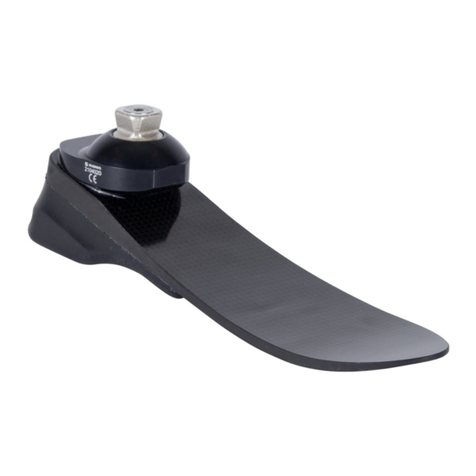
embreis
embreis eWalk E7W Series Instructions for use

Gaymar
Gaymar MTA7900 Operator's manual
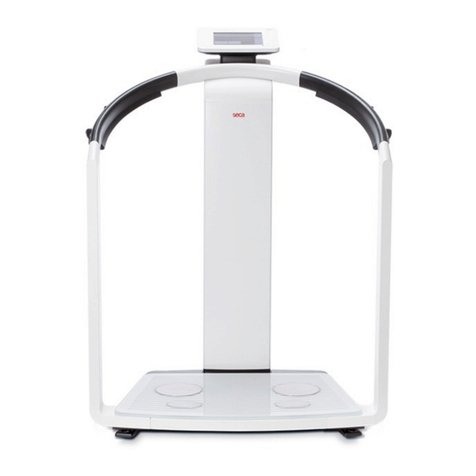
Seca
Seca 514 Administrator's manual
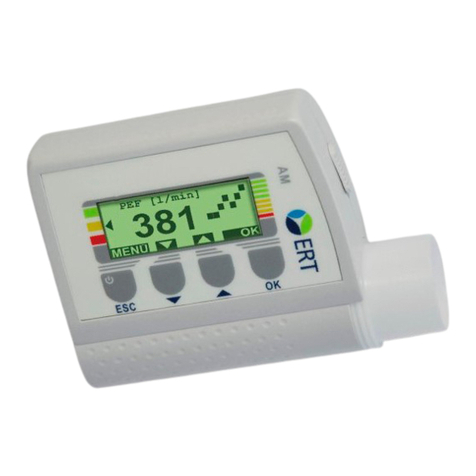
ERT
ERT Asthma Monitor AM1+ Instructions for use

Trudell Medical International
Trudell Medical International AeroDawg quick start guide
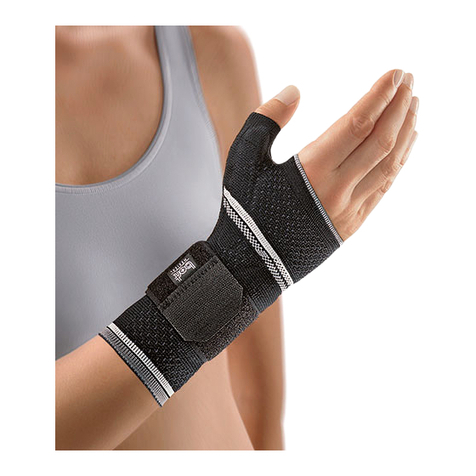
bort medical
bort medical ManuBasic Plus quick guide
